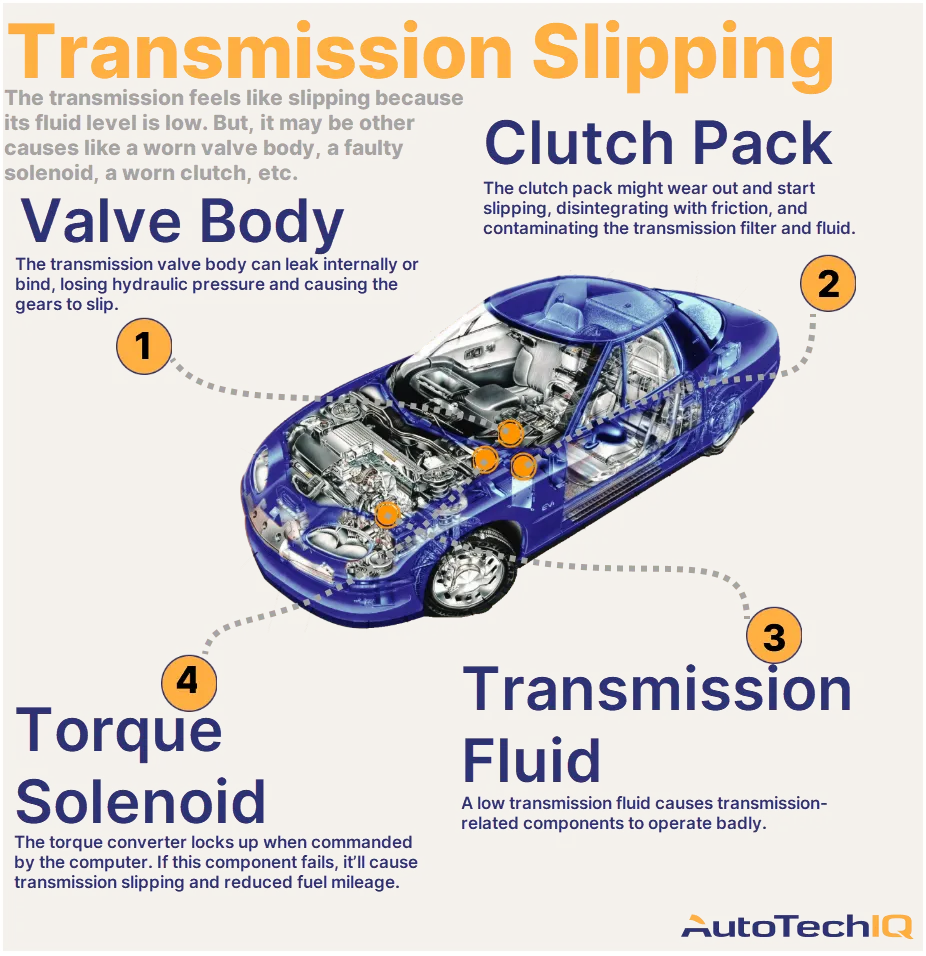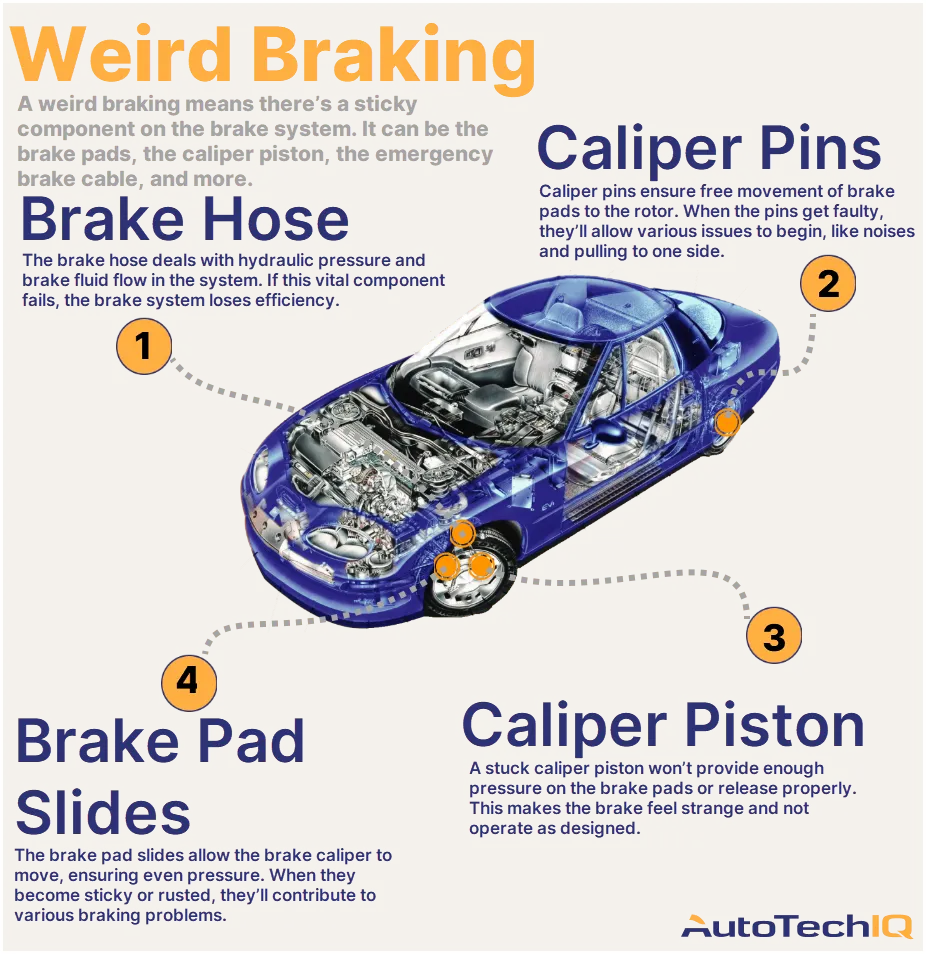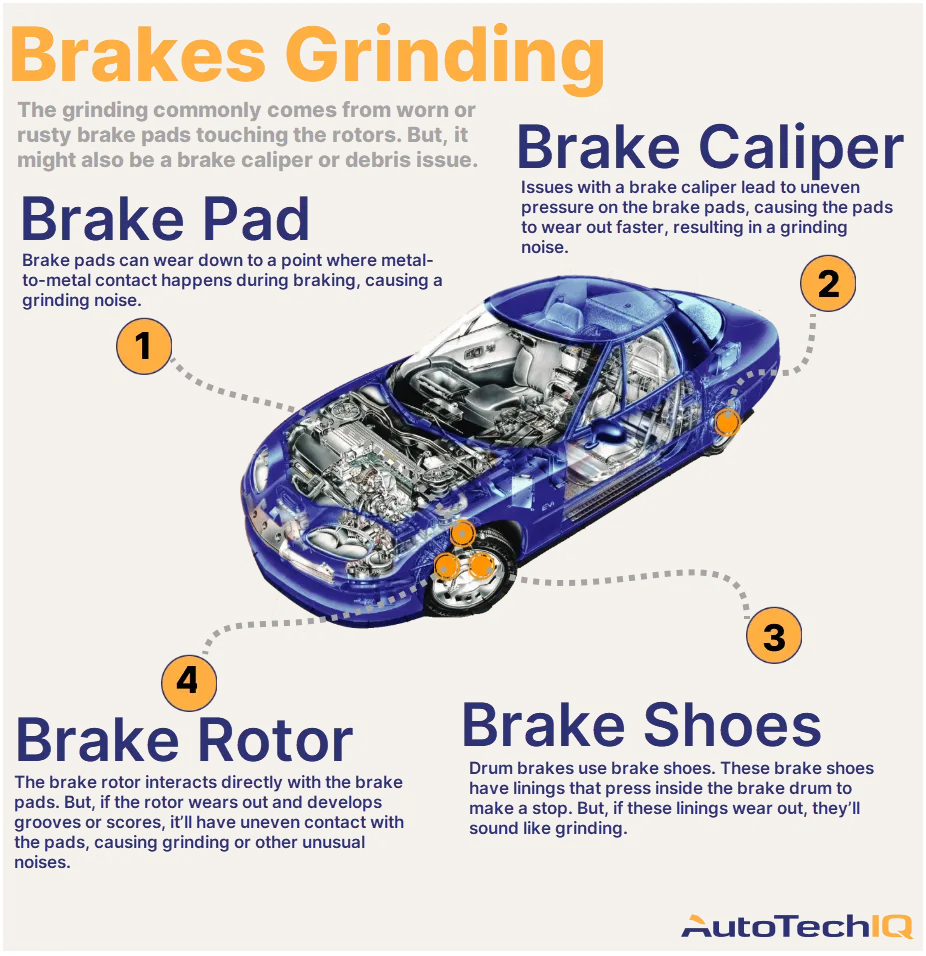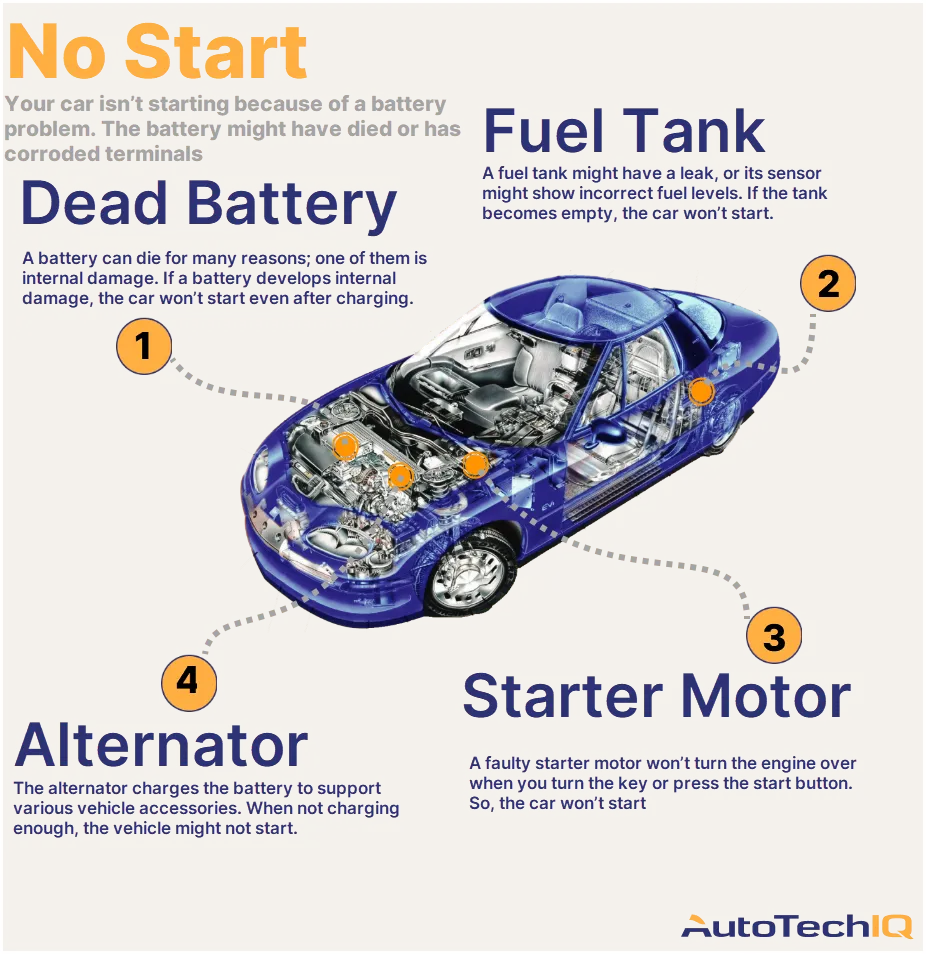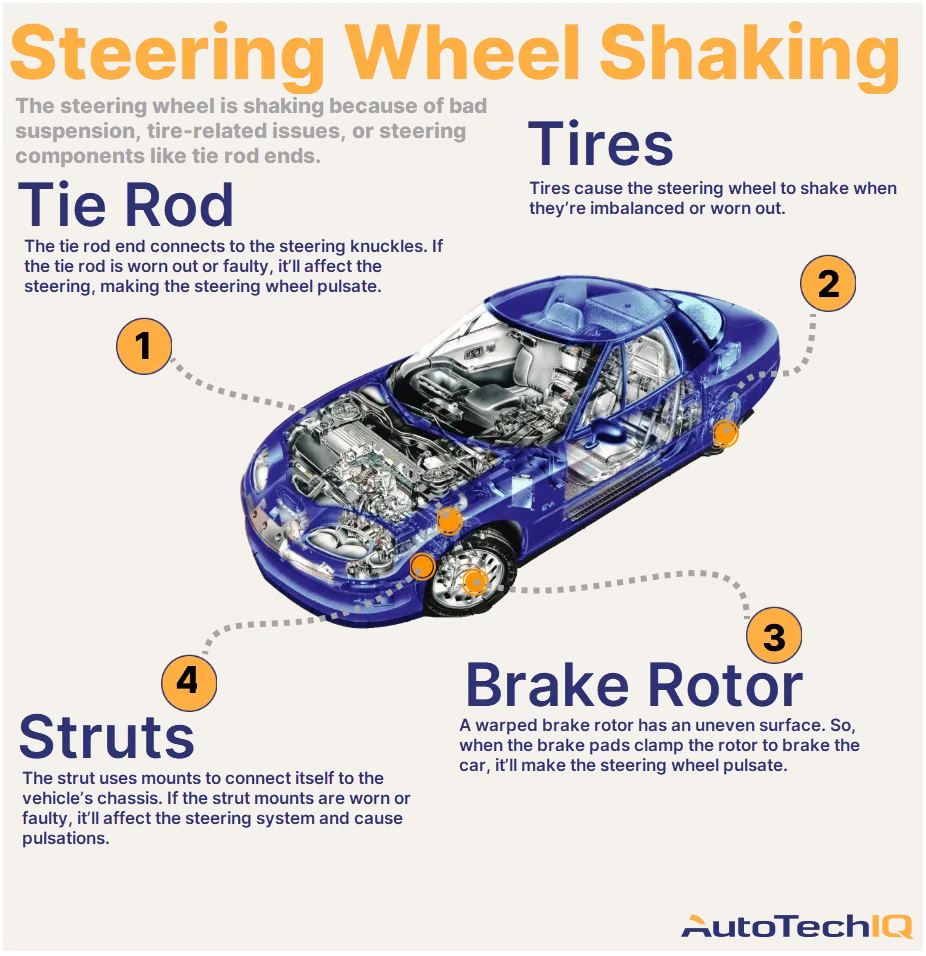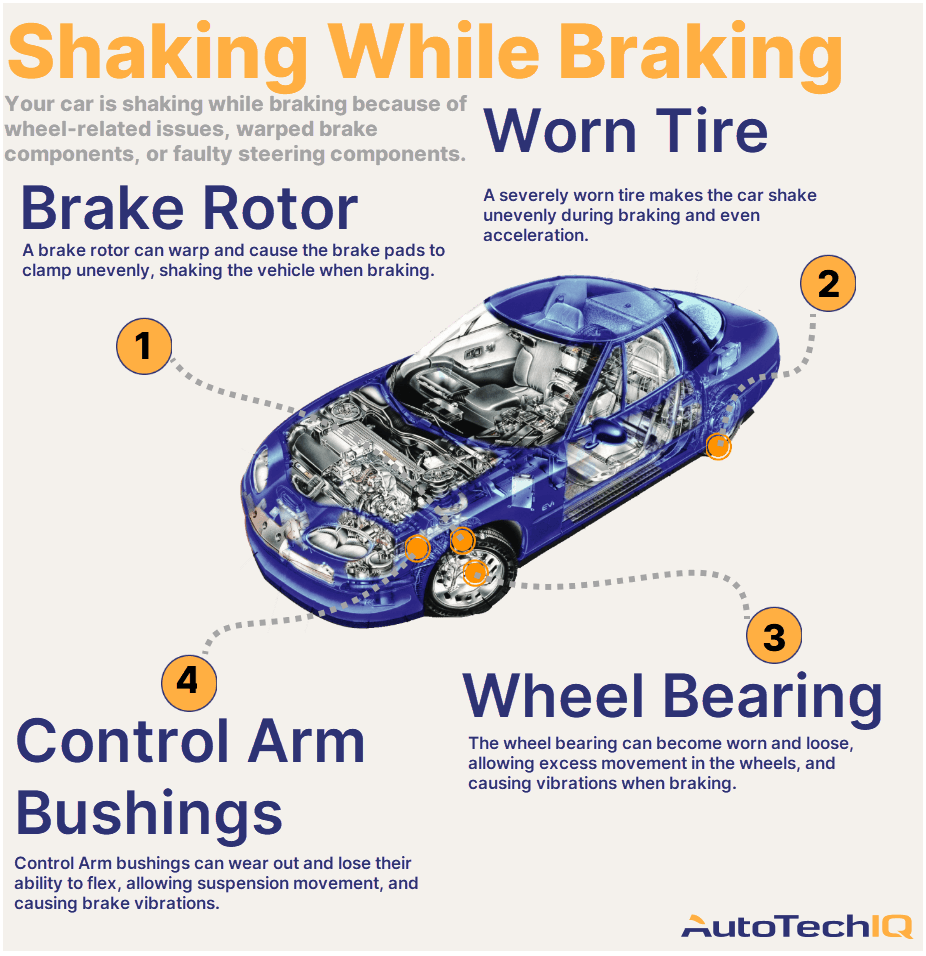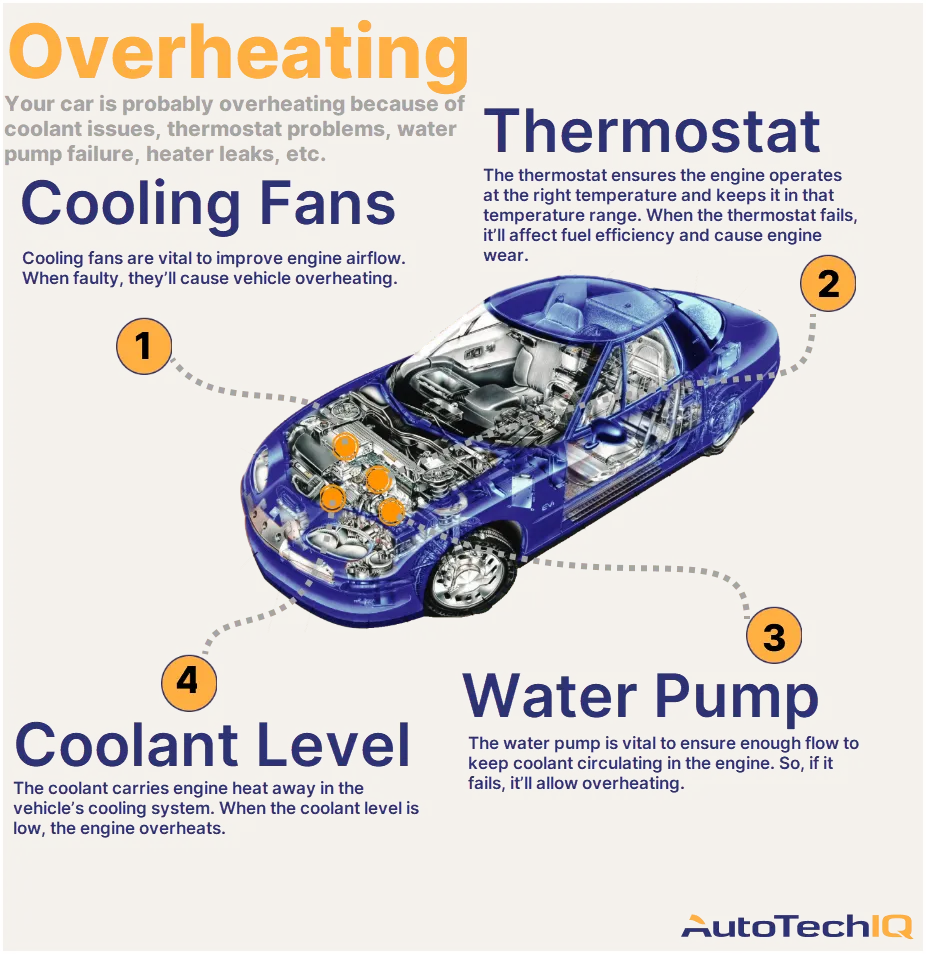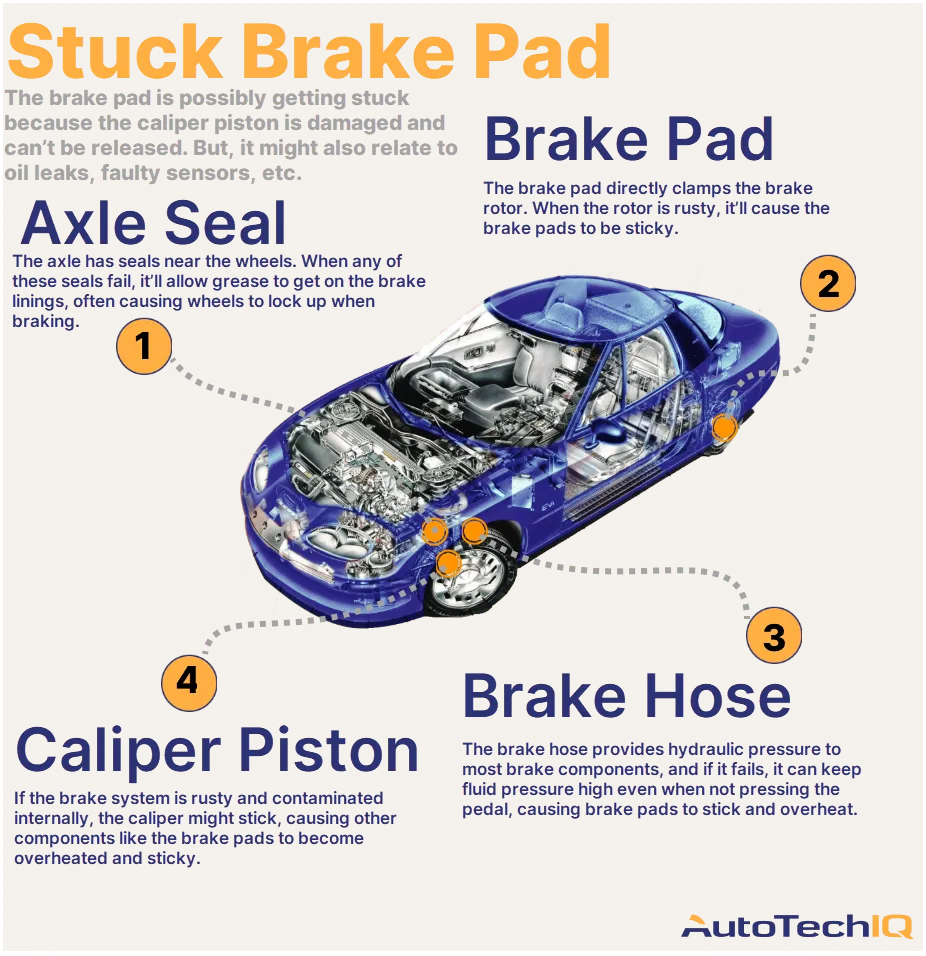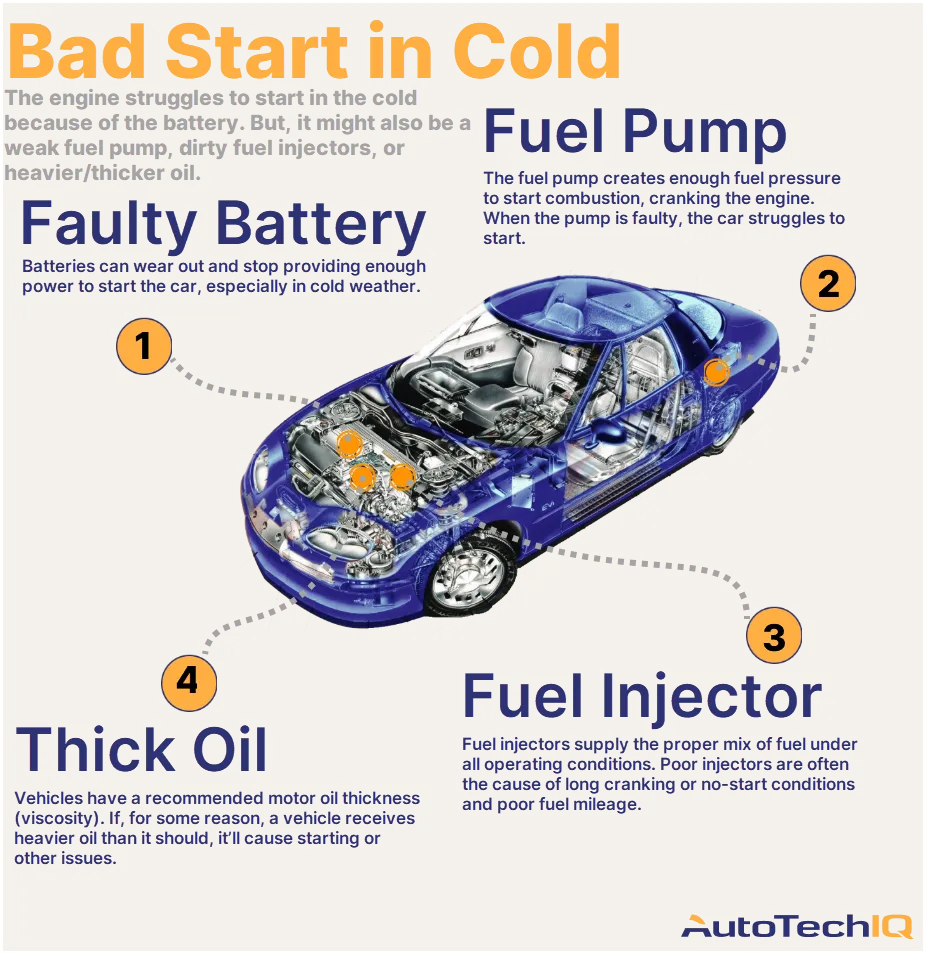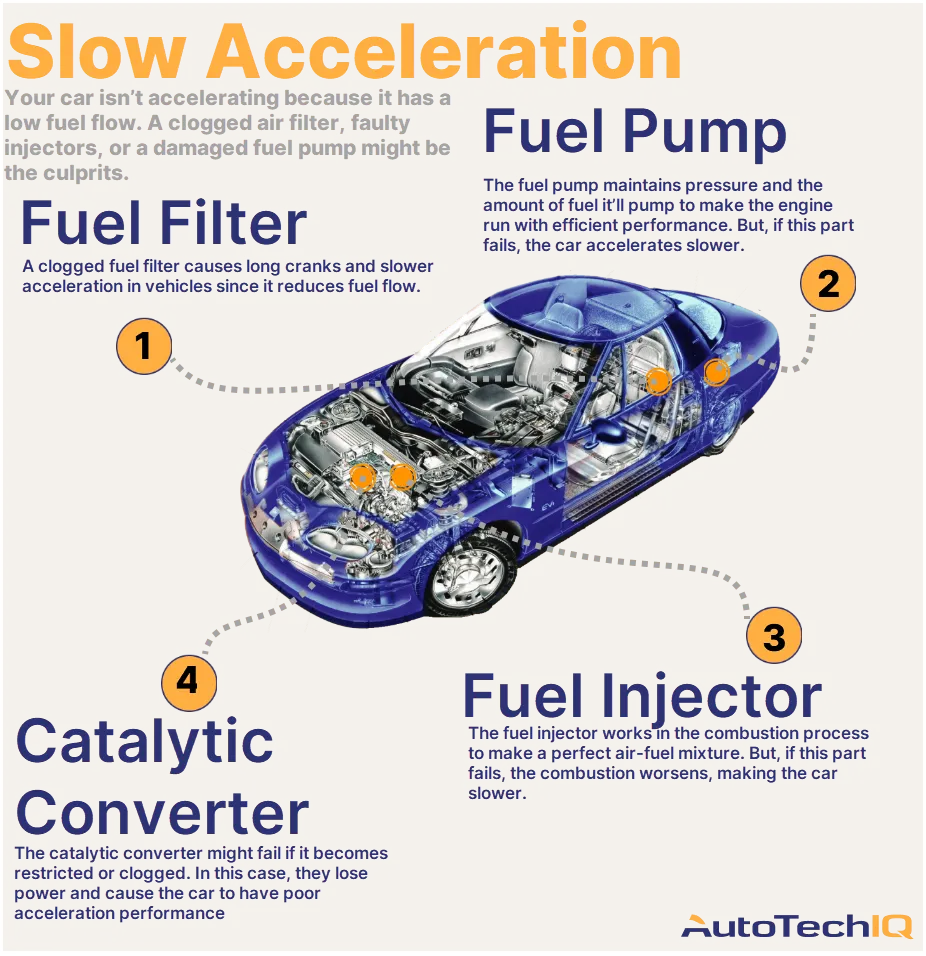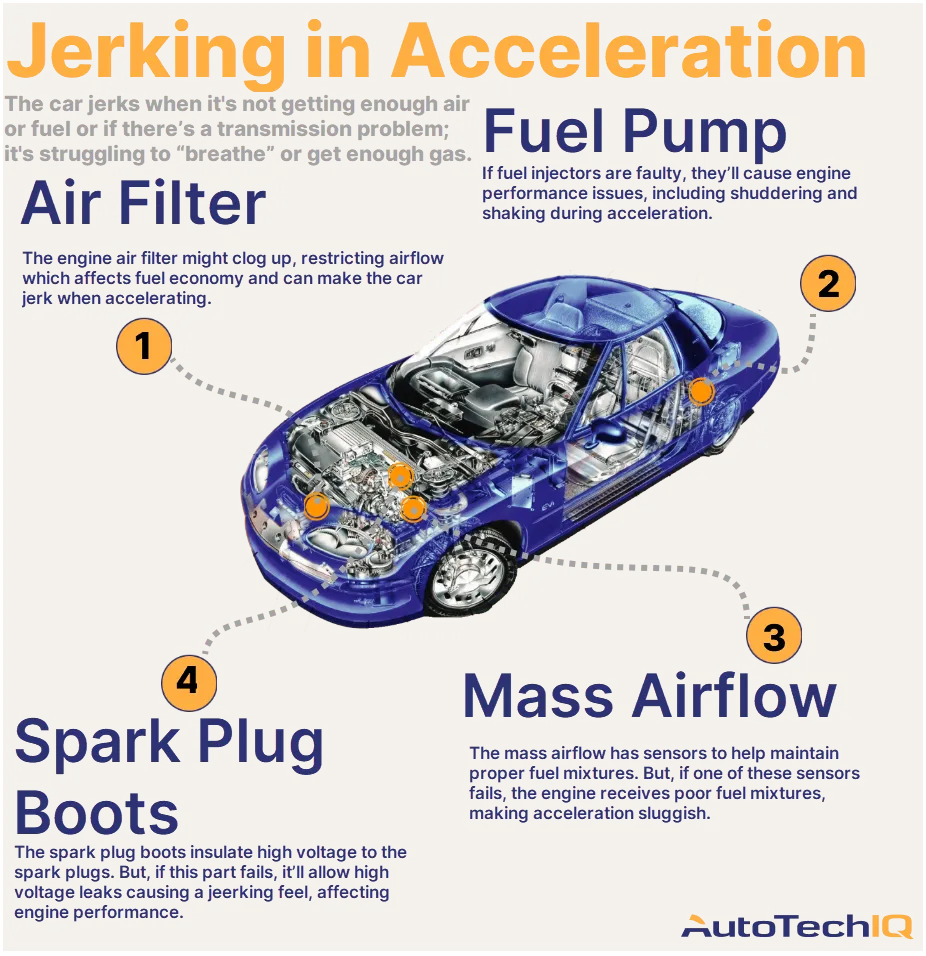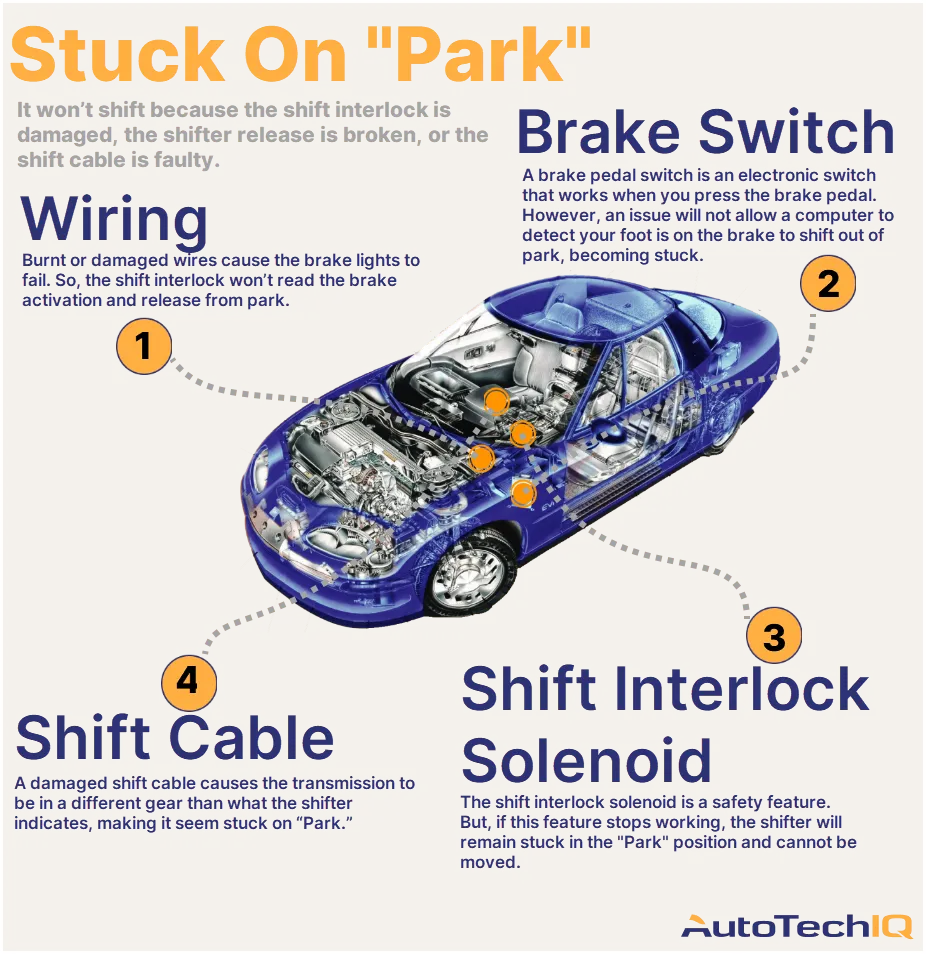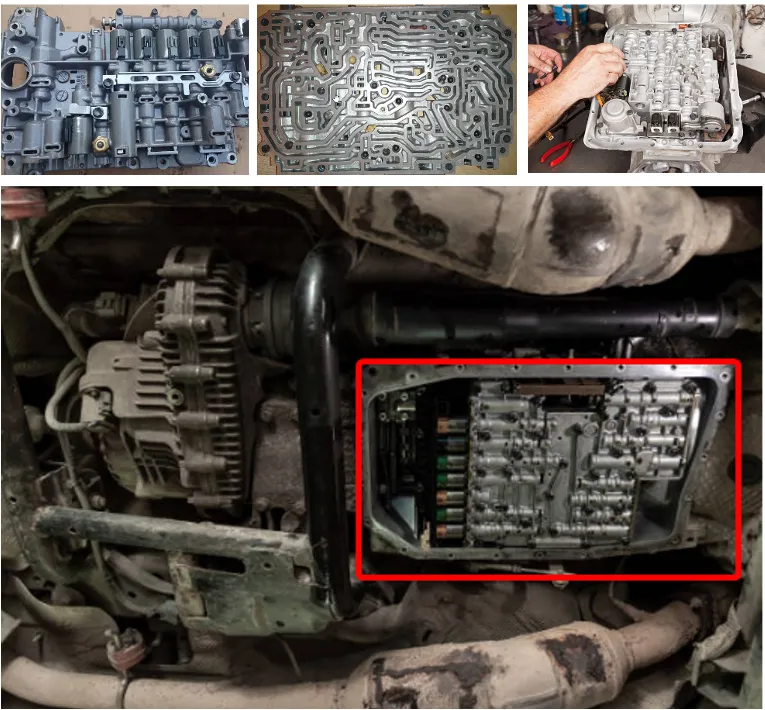
The automatic transmission hydraulic control unit (often referred to as the valve body) is a solid cast part with many channels and valves through which oil is directed to different components of the transmission. Control is achieved by directing oil flows and changing pressure. All signals received from the driver, such as pressing the gas or brake pedal, are converted by the hydraulic control unit into hydraulic impulses, which serve as commands for changing gear ratios.
In addition to valves, the hydraulic plate contains many sensors and solenoids, which together form the overall transmission control system.
Urgent repair of the automatic transmission hydraulic control unit will be needed when the following signs are observed:
- The vehicle does not move when shifting into forward gears (although reverse might still work).
- Only the first and second gears engage, but the third and fourth do not work.
- Slippage occurs when shifting gears.
- When pressing the gas pedal sharply, it does not downshift.
- Noticeable jolts occur during gear shifts.
- The engine stops when shifting gears without pressing the gas pedal.
- Detection of error codes.
- A sharp drop in line pressure (depending on the car make, this can be determined using a pressure gauge or computer diagnostics).
It is not advisable to attempt to repair the hydraulic control unit on your own.
Achieving high quality in the assembled unit without specialized equipment is nearly impossible. Furthermore, detailed knowledge about the intricacies of the automatic transmission is required, which can't be replaced by a repair manual. Therefore, if you suspect any issues with the transmission, it's crucial to immediately visit a specialized auto service that focuses exclusively on automatic transmission repairs and has professional equipment for diagnostics and repair.
In most cases, the repair and replacement of the hydraulic control unit are performed in a specific sequence.
First, computer diagnostics are conducted to obtain computer error codes. For some vehicles, it's even possible to determine which specific solenoid in the hydraulic control unit is malfunctioning. Next, the hydraulic control unit is disassembled (ideally in your presence). The unit is cleaned, the solenoids are tested on a special bench, and the unit is adjusted. Faulty parts are replaced with new original ones. The diameter of the channels and any damage to the hydraulic plate are checked. If defects are found, the channels are ground and valves of an increased (repair) size are installed. Afterward, the hydraulic control unit is reinstalled in the vehicle.
The primary rule when repairing the automatic transmission's hydraulic control unit is that the workspace must be immaculately clean. All actions undertaken are complex and demand the utmost responsibility from the repair personnel of the service center, which is why repairs are carried out in a precise and strictly observed sequence.
The main reasons for the failure of the automatic transmission's hydraulic control unit include:
- Overheating of the automatic transmission.
- Contamination of the valve system with friction dust.
- Metallic shavings making contact with valve surfaces.
- Wear of the solenoids.
- Failure of the hydraulic control unit's pressure regulator.
- Seizure of the hydraulic control unit's valves.
- Excessive contamination of the oil filter.
- Drop in oil pressure.
- Wear of the friction discs.
- Sagging or complete destruction of the valve return spring.
The normal operation of the hydraulic control unit depends on the quality and cleanliness of the transmission fluid circulating within it. Over time, moving parts wear out, and wear products begin to contaminate the oil. If it's not changed in a timely manner, the filter becomes clogged, the amount of oil supplied decreases, and reduced lubrication increases wear. Degradation of the oil quality quickly damages the entire system. If the cooling radiator malfunctions, getting clogged with dust and dirt, the automatic transmission overheats, causing disturbances in the movement of the hydraulic control unit's moving elements. Furthermore, overheating affects the controlling electronics, which, when heated, change their electrical characteristics and cause failures in the automatic transmission's operation.
To avoid costly repairs, one should follow simple recommendations:
- Conduct timely replacement of transmission fluid and filters (replacement intervals depend on the brand and manufacturer).
- Annual technical inspection at specialized car workshops (conducted when changing the automatic transmission fluid).
- Operate the automatic transmission in a gentle manner.
- During winter, it's essential to warm up the gearbox for 5-10 minutes.
- Regularly check the oil level and for leaks.
Hydraulic control unit repairs should only be done in a specialized service center by experienced personnel with many years of expertise in such tasks.


